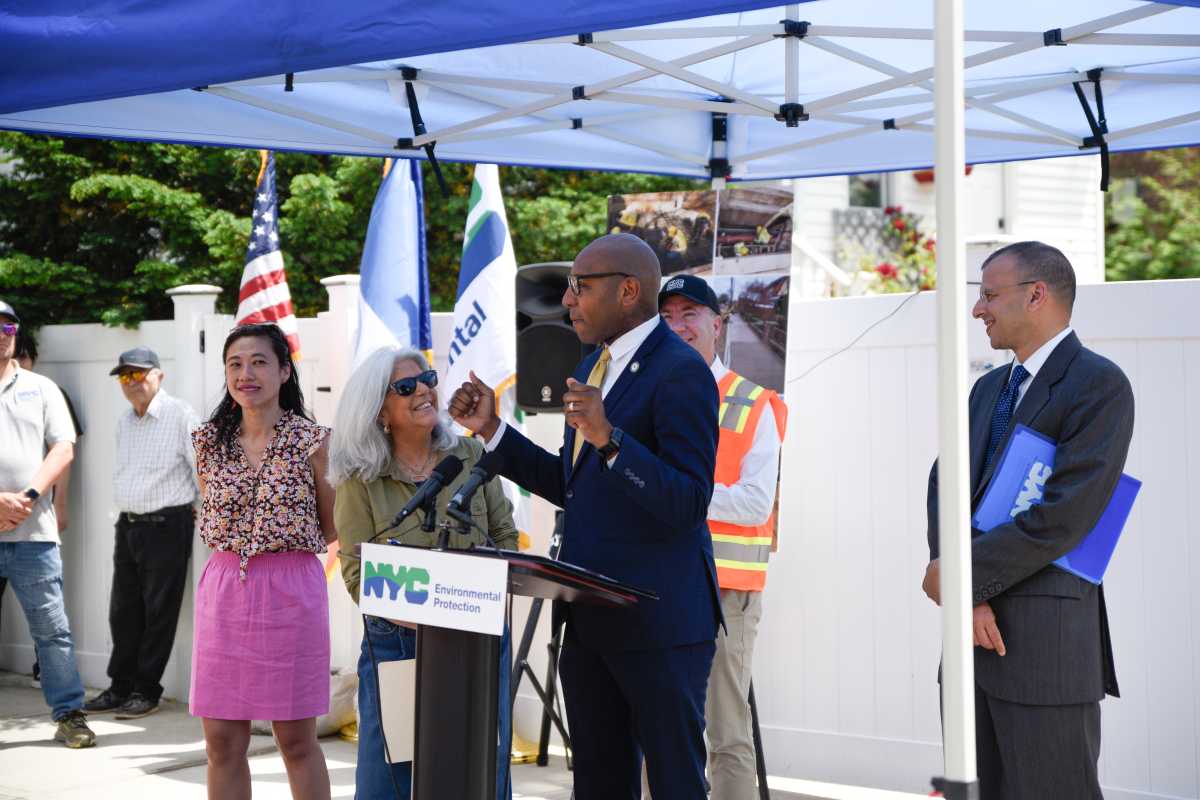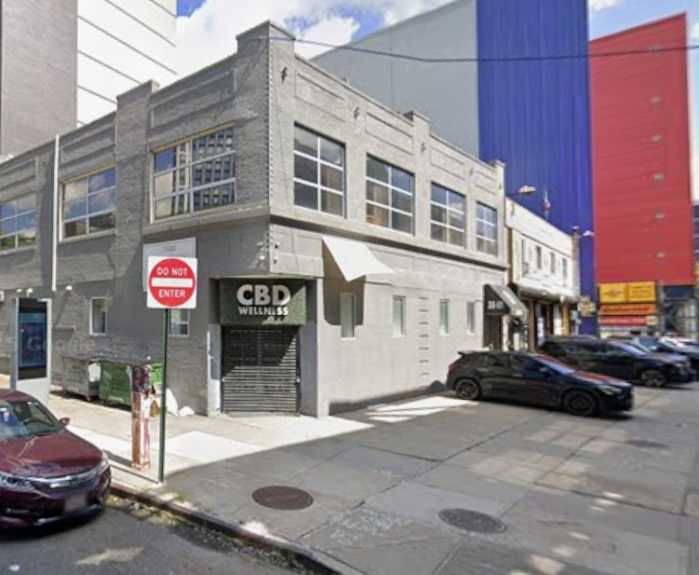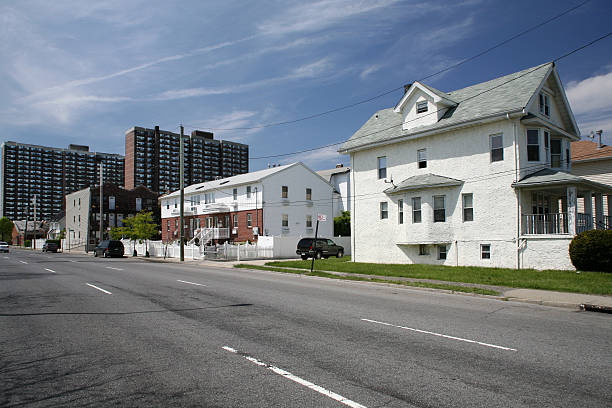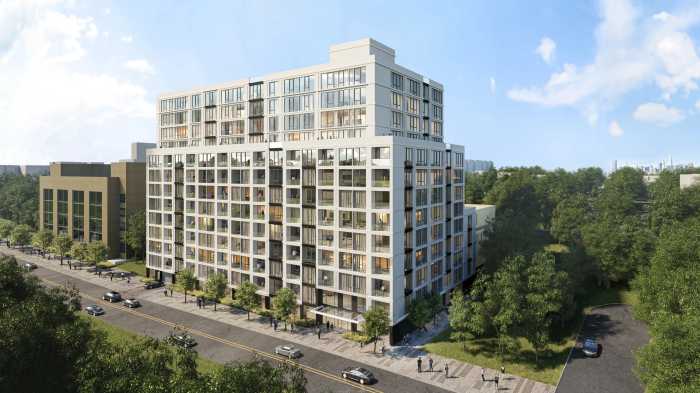After almost a decade in the making and a $128 million investment from the city, a complete overhaul of Whitestone’s sewer system is finally complete.
The area’s elected officials, city agency heads and the workers who made it all happen, gathered on a quiet residential street Tuesday afternoon to cut a ceremonial ribbon on the new system.
The project – which was split into two phases and covers 120 city blocks – added 6 miles of new storm drains, while replacing 9 miles of old water mains and two miles of sanitary sewers. Under the revamp, the underground sewers were segregated into two separate systems to increase climate resiliency and decrease the amount of pollution flowing into nearby waterways.
“This neighborhood now has a truly state-of-the-art drainage system. This is a big improvement,” said Department of Environmental Protection (DEP) Commissioner Rohit T. “Rit” Aggarwala.
The first phase of the project, which was prompted by heavy flooding in 2017, cost the city $72 million and focused on 70 blocks. The second phase, which cost the city $56 million to cover the additional 50 blocks, just wrapped up, marking the culmination of the overall reconstruction.
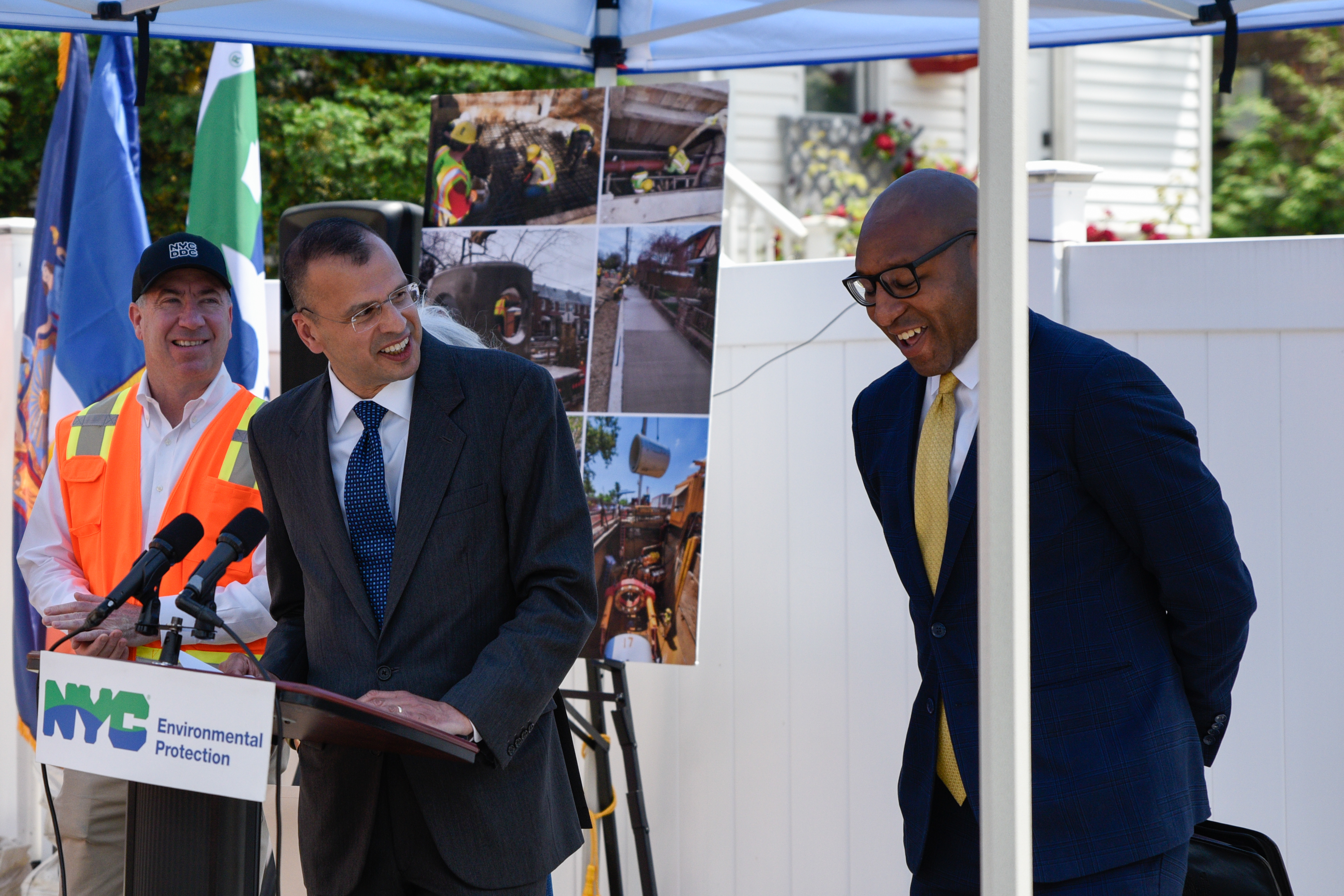
The overarching project will help alleviate the neighborhood’s flooding problem during significant rainfall and reduce the amount of sewerage that flows into the city’s waterways.
Like most of the city, Whitestone has long relied on a combined sewerage system, whereby sewerage and stormwater are sent to the same treatment facility. When it rains, such treatment plants are often overwhelmed, and the stormwater and sewerage flow into the waterways.
Given Whitestone’s geographical makeup, the officials said they were able to build an additional system under the roadway that separates sewage and stormwater. The city typically doesn’t have the ability to separate sewerage from stormwater since many neighborhoods are built atop waterways and wetlands.
By separating the two, the neighborhood’s sewage will reach the treatment plant before spilling into the nearby Flushing Bay. Stormwater will still be directed into the bay without needing treatment.
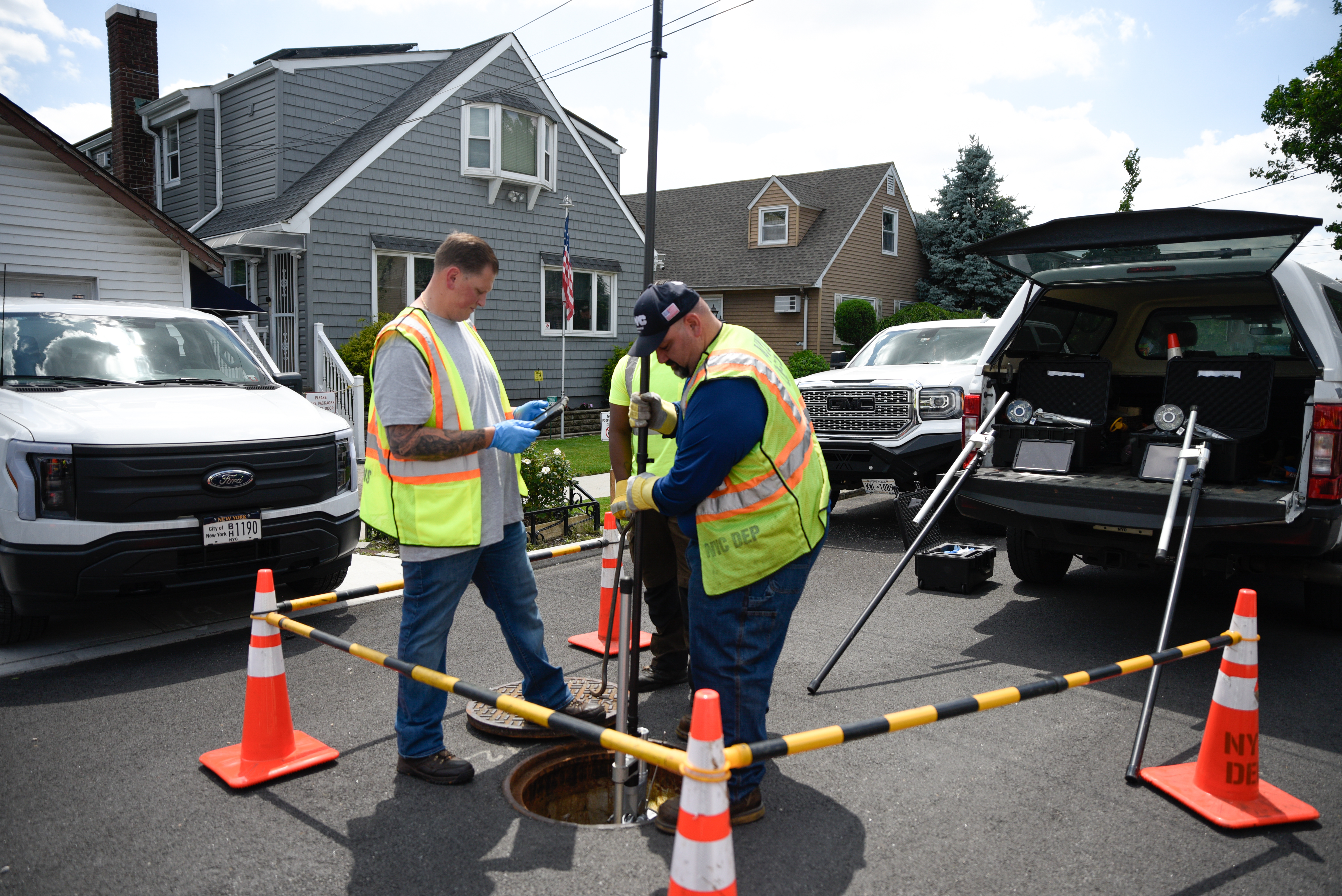
“It was not easy,” said Tim Foley, the Commissioner of the Department of Design and Construction (DDC). He noted that the second phase of the project was completed on budget and eight months ahead of schedule – just in time for hurricane season, which officially begins in June.
Borough President Donovan Richards recognized Whitestone’s past problems with flooding, noting that Hurricane Ida in 2021 caused some of the city’s most significant flash flooding.
In the years since then, the city has experienced even more record-setting rainfall and consequent flooding as a result of climate change. For Whitestone residents, the project helps ease their worries.
“You hear of these more frequent rain storms coming, and it’s hard to sleep. Our residents literally are living with anxiety because of the need for more updated infrastructure,” said Richards.
He added that even inland communities, like Whitestone, are not immune from flooding like they once were.
“Those days are over. Communities all over Queens are being impacted by climate change. And that means we have to respond and kind of keep up with Mother Nature. And that’s exactly what we’ve done here by upgrading this neighborhood sewer system,” he added.
Officials estimate that the new system will also reduce the flow of sewage into Flushing Bay by approximately 29 million gallons each year.
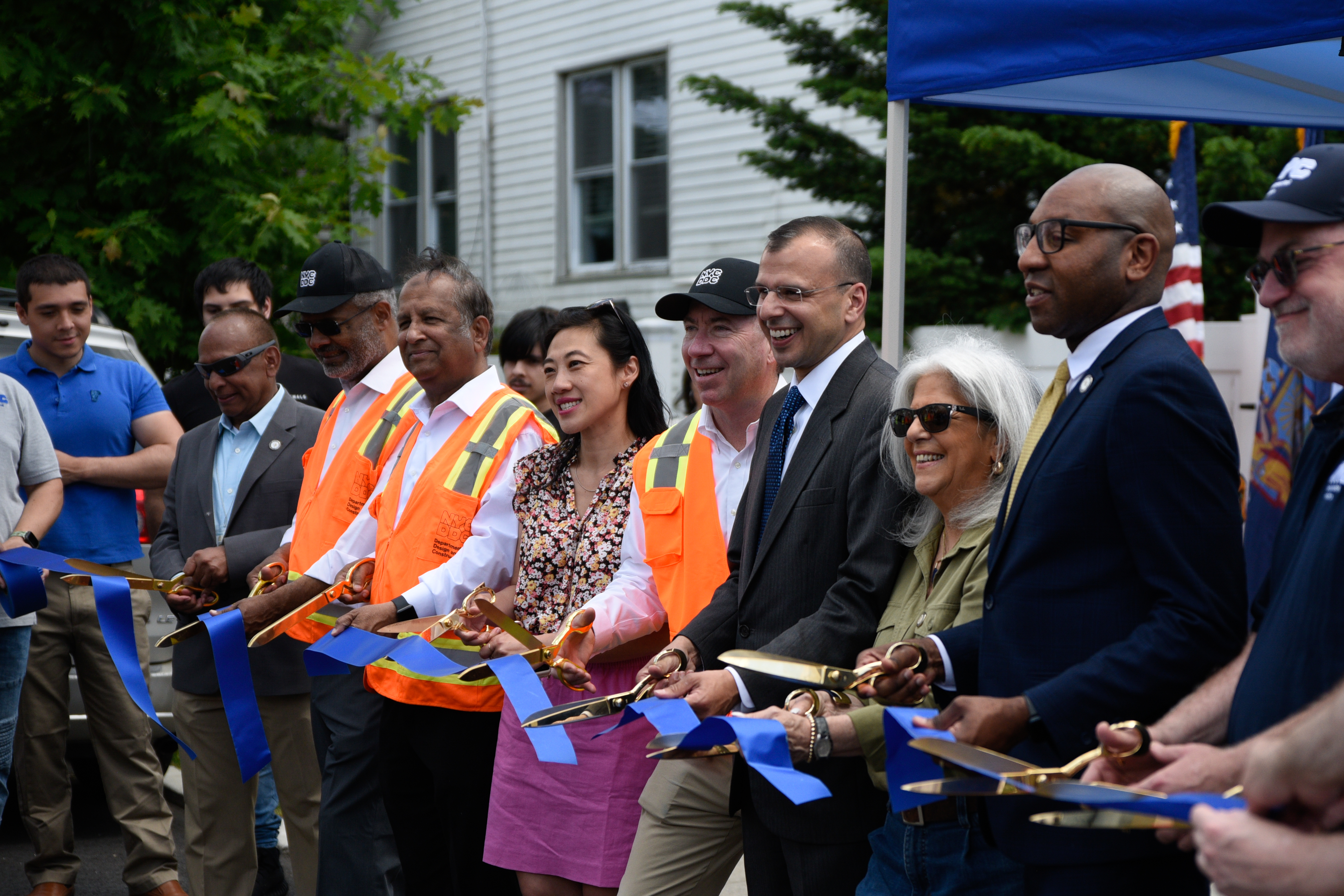
Council Member Sandra Ung, who represents nearby Flushing and has kayaked in Flushing Bay, lauded the project as a big step towards a cleaner bay.
“Beyond this current project, it means a lot for future generations,” she said at the ribbon cutting.
Council Member Vickie Paladino, who represents the area, recalled the 2021 flooding that left local residents with up to eight feet of sewer backup in their basements. While she was not an elected official at the time, she recognized the importance of the project.
More recently, another wave of flooding less than a year ago in September also left Whitestone residents with destroyed furniture and appliances as flash flooding hit the city. Officials and local residents said that since then, conditions have improved.
“I am pleased to death with the quality of the work,” said Paladino, a lifelong Whitestone resident, on Tuesday.
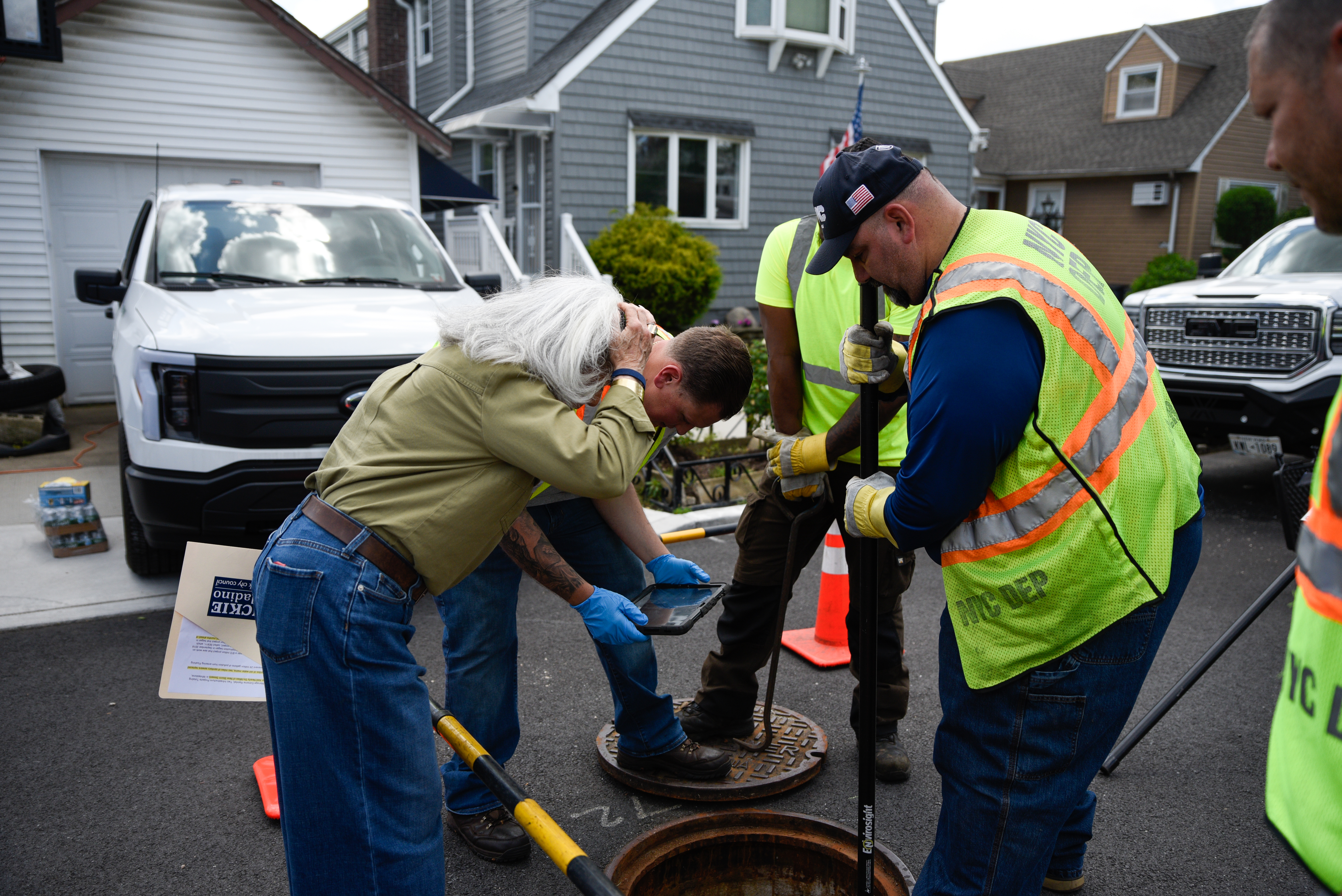
Since taking office, Paladino has secured funding for several high-resolution cameras on extendable poles, which DEP workers use to investigate sewer conditions.
The cameras give workers a sense of what’s going on underground without having to descend themselves. Following the ribbon cutting, workers demonstrated how they function.
“It would be great if we can replicate this success in every single neighborhood,” said Aggarwala, the DEP Commissioner. “That will take us a while, but eventually we will have to get there.”

